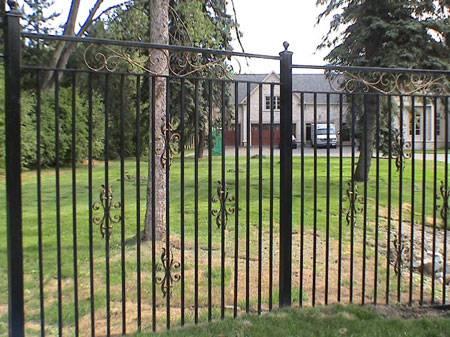Last Updated on April 9, 2024 by chanuka chanuka.23e2
Wood is not the only material you can use for fencing, of course. Other materials may make a better fit with your landscape design and your budget
- Vinyl fencing, made of the same PVC as siding and plumbing pipe, comes in a variety of styles that resemble wood and metal. You can get vinyl pickets, lattice, boards—even vinyl basket weave. It comes in prefabricated panels (some require assembly). A few styles are designed to follow the contour of a slope, and you can modify end posts to install stepped styles.
Although its lateral and load-bearing strength is not as great as wood or metal, PVC is otherwise virtually indestructible. Vinyl fencing comes in colors (typically whites and browns), doesn’t need painting, and won’t peel, rust, or decay.
Most styles come as kits with posts, rails, and infill cut to the right lengths. Panels are usually 72 to 96 inches long. - Prefabricated wood-fence panels are made for fence builders in a hurry. They are usually available in 6- and 8-foot lengths. All you have to do is install posts, nail on the bays, and apply the finish. You may even find that it is less expensive to buy prefabricated bays than to build your own.
Before you decide to use prefabricated bays, examine them carefully. They are available in a wide variety of styles, prices, grades—and quality. Lower cost may mean that shortcuts have been taken in quality of materials, construction, or both. Buy panels made with pressure-treated lumber and 2×4 rails. They should be assembled with galvanized nails or screws, not staples. Make sure the product is a worthwhile investment that will give you years of service and not require excessive maintenance.
Tubular aluminum and steel fences are manufactured in many sizes, designs, and colors. Kits usually come complete with posts, rails, prefabricated panels, and the hardware needed to fasten the parts together.
If you’re fencing a moderate slope, use a style with a frame you can rack to match the angle of the ground. Steep slopes require angled panels. Stepped fencing must be custom-made. You’ll find pre painted metal fencing in black, white, or brown (make sure the finish is a poly-powder coating). If you buy unpainted fencing, apply a rust-resistant paint before putting up the fence. Most tubular fences attach to metal posts that are set in concrete. Some prefab panels, however, attach to wooden posts or masonry columns with special brackets.
What is consistent among all tubular fencing is the necessity to install it one panel (and one post) at a time.




 Chat
Chat 








